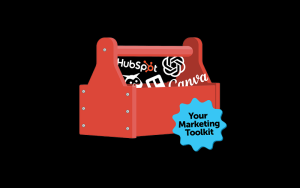Not sure what to bring to your first design meeting? Don’t worry; we’ve got you covered.
If you’re not an artistically-minded person or you’ve never worked closely with a graphic designer before, it can be intimidating to try and convey your ideas in a way that gives them a clear picture of what your company needs.
Just remember that your designer’s objective is to help you create engaging marketing materials. They want to understand your vision and create designs that are right for you. To help them accomplish this, there are a few things you can do to communicate your ideas clearly and give them all the information they need to get started.
So if you want to make sure you’re prepared for your first design meeting, read on!
Related: How to Write a Creative Brief Your Designer Will Love
1. DECIDE ON YOUR GOAL
This may sound like a no-brainer, but you’d be surprised how often the intention is unclear of a print piece. Think through the purpose the item will serve and understand what you ultimately want the recipient to do after they’ve read it. If you’re not sure, then your audience won’t be sure, either.
Avoid this confusion by defining your goals for the piece at the beginning. Have a clear call to action in mind – whether it’s to check out a website, call a certain phone number or use the included coupon code – and relay that to your designer. Your designer will be able to showcase your call to action in the finished artwork in a way that is noticeable and enticing.
2. Know Your Audience
Knowing your audience is an important part of creating marketing materials that will appeal to them. Think about people you’re trying to appeal to. What job titles do they have? Where do they live? Is there a specific age range or gender that would be most receptive to your messaging? Relay all of this to your designer. They will work to create a brochure, eBook, direct mail piece or other marketing asset that will appeal to the senses of your audience.
Related: Why You Should Ask Your Printer about their Creative Team
3. Know How Your Product Will Be Distributed
There are many ways to distribute marketing materials, and the delivery method will be crucial to the design of the piece. For example, a pamphlet you plan to include in a new customer kit will have a very different design than a digitally downloadable guide. And pieces delivered by mail will have very specific design guidelines.
If you plan for this item to be included in a trade show welcome bag, consider how big the bag might be and how differentiating your flyer from the others is a high priority. Or maybe this is a piece your sales team will deliver by hand, freeing up your design possibilities. Talk your distribution method through with your designer, and ask for their advice.
4. Have Examples of Admired Work
If you’re not sure what you want or you are working with a new graphic designer who isn’t aware of your preferences, it’s a good idea to bring in examples of other marketing materials that have a similar look and feel to the one you’re going for. This will help the designer get a good sense of what you want from the finished piece and what direction the artwork should take. When selecting other work examples, consider including other branded materials from your company so the designer understands your current style, as well as pieces that evoke the feeling you want to relay to the viewer.
Related: Vector vs. Raster Files | Why You Need to Know the Difference
5. Have One Person of Contact
This is a definite must if you work for a busy company with lots of stakeholders in the final print piece. It’s best to have one person who is designated to communicate with your graphic designer. This person should be able to answer any questions related to the design and have the authority to approve the proofs. It is a good idea to make these responsibilities an ongoing part of this person’s job duties so they will maintain an easy flow of communication with your designer, making for a less time-consuming process overall.
The communication you have with your graphic designer is vital to the success of the finished piece. Have a goal, and be aware of your target audience and how to appeal to them going in. Bring examples to let your designer know what you are looking for, and avoid confusion by having one contact person.
Hopefully these tips will help you get great looking marketing materials that will help you to grow your business. If your marketing materials need a facelift, drop a line to the design experts at Ironmark. They can help give you the fresh new look you’re going for.




